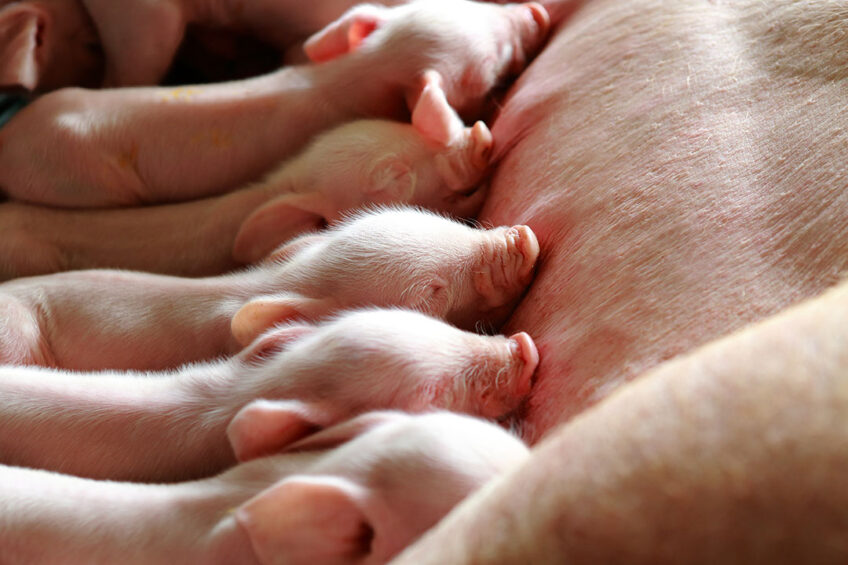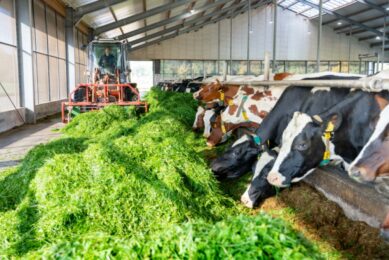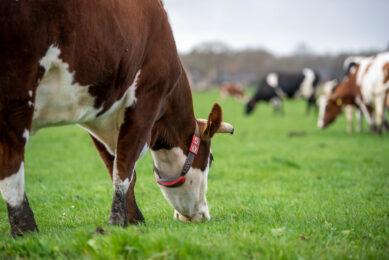Support sow longevity with probiotics

Optimal body condition score at the end of the lactation period positively influences the longevity of the sows. Use of dietary probiotics has proven to reduce weight losses during the lactation period and as a result, improve sow fertility. Additionally, probiotics are able to increase piglet weaning weight. Therefore, probiotics seem to be a very promising feed strategy for sustainable pig production.
With increasing numbers of piglets born, the energy requirements for milk production of prolific sows simultaneously increases. Feed intake during the lactation period is often not sufficient to fulfil all the requirements for the high milk production. As a consequence the sow will use her own body reserves which can lead to serious body condition losses during lactation. An important concern of this negative energy balance is the adverse effect on reproductive performance and productivity in the next cycle. Especially gilts, who have not reached their mature body weight yet, and lean dam lines are sensitive for detrimental body weight losses. As a result, sows are often culled before their third or fourth parity which is before the time at which the sow reached her maximum productivity and her replacement costs are covered.

It is estimated that every kg body weight lost during lactation has to be compensated by an additional amount of 4kg feed in the next gestation period. Based on this estimation, a loss of body weight of 15kg requires an additional amount of 60kg gestation feed in the next cycle only for recovery. From a financial point of view and for better life time performance of the sow, it is clear that body weight losses during lactation should be limited as much as possible.
Pro- or antibiotics
Use of probiotics is an important item to consider in sustainable pig production strategies. The term probiotic originates from ‘pro’ (for) and ‘bios’ (life). A useful explanation as probiotics are known to support the development of beneficial microbes in the intestinal tract. Probiotics support the feed digestion and create a positive environment for beneficial intestinal microbes (e.g. Lactobacillus). The positive shift in the microflora results in reduced amounts of opportunistic bacteria such as Salmonella, Escherichia coli and Clostridium. Supporting beneficial bacteria by probiotics is in clear contrast to the use of antibiotics, known for their ability to kill or inhibit the development of bacteria and which are therefore very effective against pathogenic bacteria species. However, antibiotics do not only limit the growth of the ‘bad guys’, it is well known that antibiotic treatment also negatively influences the beneficial bacteria.
Efficacy of probiotics in sows
In a recent study performed at the Free University of Berlin, Germany, the effect of a Bacillus subtilis type probiotic* was investigated in sows over two sequential reproduction cycles. A total of 50 Danbred sows of parity 2-5 were equally divided over a control group (without probiotic) and a probiotic group, taking into account that both groups were similar in terms of parity, body condition and live weight. Over the entire study period, the sows were maintained in the same treatment group and were offered either a control or a probiotic mash diet. Cross-fostering to equalise litter size to approximately 14 piglets per litter was carried out within 24h after farrowing and occurred within the same treatment group. Suckling piglets were offered creep feed from 7 days of age to weaning (25 days of age), with or without probiotics depending on the treatment of the sow. The addition of the probiotic in sow diets significantly reduced losses of body weight and back fat in the critical lactation period. The difference in body weight measured immediately after farrowing and after weaning gives a clear insight on the weight losses related to the negative energy balance in the lactation period. Use of the dietary probiotic resulted in a significantly lower body weight loss of almost 10kg (cycle 1) and 5kg (cycle 2) difference compared to the control group (Figure 1).
Figure 1 – Efficacy of addition of probiotics on sow longevity. Difference between control and probiotic treatment, performance data from 2 sequential cycles of with Danbred sows.

At the same time, the probiotic positively influenced milk production as the dietary treatment resulted in larger piglets at weaning (+ 300 gram) with higher litter weaning weights (Table 1). Additionally the weaning-to-oestrus interval reduced, resulting in less non-productive days. Finally, the probiotic has also shown to have a positive influence on the incidence of Mastitis-Metritis-Agalactia (MMA) syndrome.
Optimal gut health
For a sow to achieve high milk production and maintain body condition during the lactation period, optimal gut health and nutrient absorption are essential. Improvements of the faecal consistency and faecal microflora were also observed in the group of animals which received a diet with probiotics, in both the sow and her suckling piglets. At weaning age, increased numbers of the health related Lactobacillus and Bifidobacterium species were found while lower amounts of the Clostridium clusters and the Escherichia group were observed. Clostridium perfringens and E. coli are often related to intestinal infections and diarrhoea. These results are in line with the beneficial effects seen in piglets using the probiotic in diets after weaning.
Use of dietary probiotics could be part of the solution to improve sow longevity, from an economic, health and welfare point of view. Improving gut health and feed efficiency support the high productive sow to maintain her body condition and at the same time, produce enough milk for a better growth of her suckling piglets. Higher weaning weights in combination with a more optimal intestinal microflora, give piglets a better start after weaning. The feed cost reduction in the gestation period, to compromise the weight losses in the previous lactation, can save € 13/sow/year based on the results of the trial at the Free University of Berlin. Besides feed cost savings, reducing the lactation losses has a positive influence on the fertility, performance of the sow in the next reproduction cycle and subsequent litter uniformity. Overall, probiotics are able to support health, fertility and productivity, and thereby the longevity of the sows.
* Calsporin, 30 ppm inclusion
Author: Tom Rijsselaere and Pauline Rovers-Paap, Orffa
Join 13,000+ subscribers
Subscribe to our newsletter to stay updated about all the need-to-know content in the dairy sector, two times a week.










